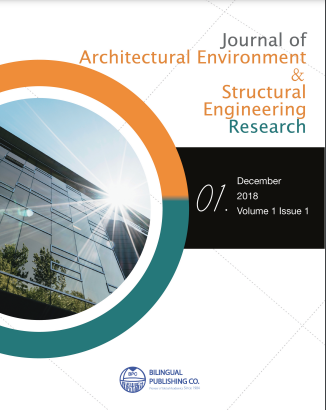-
367
-
210
-
184
-
180
-
171
Simulation of self-compacting concrete properties containing silica quicksand using ANN models
DOI:
https://doi.org/10.30564/jaeser.v1i1.158Abstract
Self-compacting concrete (SCC) mix designs exhibit complexities in their mechanical properties due to composite nature of the material and the multitude and variety of factors that affect such properties. In this paper, a set of SCC mix designs are made using silica quicksand (as filler) instead of rock powder with other required materials. The tests of fresh concrete such as the slump flow, J-ring, V-funnel, L-box tests and the hardened concrete tests are investigated and considered. The tests results are shown that, a high quality has been achieved for SCC mixture contains the quicksand and silica fume contents with low lubricant admixture dosage. The research is embodied the use of a branch of Artificial Neural Networks (ANN) as a quick and reliable alternative to such experimental testing. Results show that the ANN technique can perform as a satisfactory alternative to experimental testing to provide speedy prediction of optimum silica quicksand content must be added prior to SCC mix design. As such, proposed method for the SCC mix design are limited in scope and are approximate at best as they must rely on the results of experimental tests, which are both costly and time-consuming to perform.
References
[1] Okamura, H. (1997), Self-compacting High-Performance Concrete, Concrete International, 19(7), 50- 54.
[2] Nagamoto, N. and Ozawa, K. (1997), "Mixture properties of self- compacting, high-performance concrete", Proceed-ings of Third CANMET/ACI International Conferences on Design and Materials and recent advances in concrete technology, SP-172, V. M. Malhotra, American Concrete Institute, Farmington Hills, Mich., 623-637.
[3] Okamura, H. and Ouchi, M. (1999), "Self-Compacting Concrete—development, present, and future", Proceedings of 1st International RILEM Symposium on Self-Compact-ing Concrete, Stockholm, Sweden.
[4] Okamura, H. and Ouchi, M. (2003), "Self-compacting concrete", J. Adv. Concre. Technol., 1(1), 5-15.
[5] Brouwers, H.J.H. and Radix, H.J. (2005), "Self-compact-ing concrete: theoretical and experimental study", Cem. Concre. Res., 35 (1), 2116 – 2136.
[6] Andreasen, A.H.M. and Andersen J. (1930), "Ueber die beziehungzwischenkornabstufung und zwischenraum in produktenauslosenko ̈ rnern (miteinigenExperimenten), Kolloid-Zeitschrift, 50 (1), 217– 228 (in German).
[7] Aggarwal, P., Siddique, R., Aggarwal, Y., Gupta, S. and Gupta, M. (2008), "Self-compacting concrete - procedure for mix design", Leonardo El. J. Pract. Technol., 7(12), 15-24.
[8] Su, N., Hsu, K.C. and Chai, H.W. (2001), "A simple mix design method for self- compacting concrete", Cem. Con-cre. Res., 31(12), 1799–1807.
[9] Su, N. and Miao, B. (2003), "A new method for mix de-sign of medium strength concrete with low cement con-tent", Cem. Concre. Comp., 25(1), 215– 222.
[10] MD Nor, A. and Hanizam, A. (2011), "The compressive and flexural strengths of self-compacting concrete using raw rice husk ash", J. Eng. Sci. Technol., 6(6), 720-732.
[11] Rocco, C.G. and Elices, M. (2009), "Effect of aggregate shape on the mechanical properties of a simple concrete", Eng. Fract. Mech., 76(2), 286-298.
[12] Gupta, S., (2013), "Using artificial neural network to predict the compressive strength of concrete containing nano-silica", Civil Eng. Archit., 1(3), 96-102.
[13] Saridemir M., Ozcan F., Severcan M.H., and Topçu I. b. (2009). "Prediction of long-term effects of GGBFS on com-pressive strength of concrete by artificial neural networks and fuzzy logic". Constr. Build. Mater., 23(3), 1279-1286.
[14] Alshihri, M.M., Azmy, A.M., and El-Bisy, M.S. (2009), "Neural networks for predicting compressive strength of structural light weight concrete", Constr. Build. Mater., 23 (6), 2214-2219.
[15] Demir, A. (2015), "Prediction of Hybrid fibre-added con-crete strength using artificial neural networks". Engineer-ing, Comput. Concrete,15 (4), 503-514.
[16] Atici, U. (2011), "Prediction of the strength of mineral admix-ture concrete using multivariable regression analysis and an ar-tificial neural network", Expert. Sys. Appl., 38 (8), 9609-9618.
[17] Khan, M., Noor, M. and Fazal, R. (2015), "Modeling shot-crete mix design using artificial neural network", Comput. Concrete, 15 (2), 167-181.
[18] Chauvin, Y. and Rumelhart, D.E., (1995), "Backpropaga-tion: Theory, Architectures, and Applications. Lawrence Erlbaum Assoc., Inc., Publ., Hillsdale, N.J.
[19] The European Guidelines for Self-Compacting Concrete Specification, Production and Use. (2005).
Downloads
How to Cite
Issue
Article Type
License
Copyright © 2019 Journal of Architectural Environment & Structural Engineering Research

This is an open access article under the Creative Commons Attribution-NonCommercial 4.0 International (CC BY-NC 4.0) License.




 Ramin Tabatabaei Mirhosseini
Ramin Tabatabaei Mirhosseini





